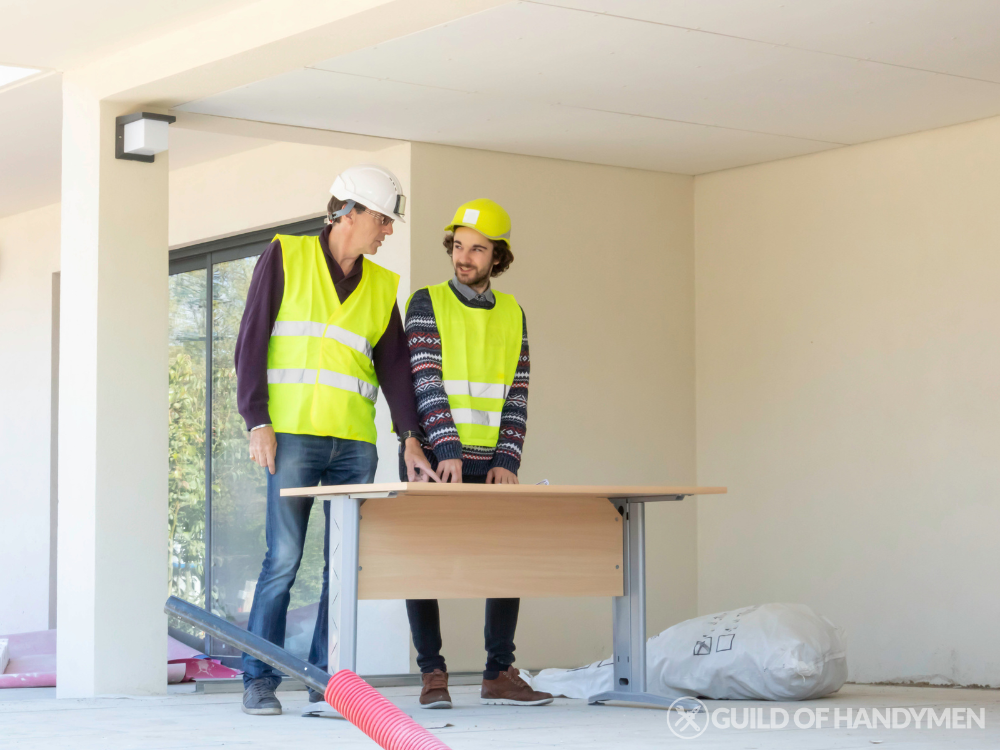When you’re planning a home improvement project or repairs, it can be tempting to dive straight in. But before picking up a single tool, it’s a wise idea to organise a site visit. A pre-project site visit is an essential step for both the homeowner and the handyman. It sets the stage for a smoother, more efficient job and ensures everyone is on the same page. Let’s walk through why a site visit is so important and what to expect when a handyman comes to evaluate your space.
This blog is part of our series on how to hire a reliable handyman – sharing everything you need to know to get the best handyman for your needs.
Why a Site Visit is Crucial
A site visit allows the handyman to assess the specifics of your project in person. While phone or email discussions can be helpful, they often miss the details that become obvious when standing in the actual space. Here are some key benefits of a site visit:
- Accurate Assessment: A visit helps to identify potential obstacles or special requirements that could affect the time and cost of the project.
- Clear Communication: It’s the perfect opportunity to discuss your expectations, share ideas, and ask questions.
- Safety and Feasibility: The handyman can check for safety hazards, access challenges, or structural issues that could impact the job.
- Tailored Solutions: Seeing the site in person enables the handyman to suggest the best materials, designs, and tools to use.
By arranging a site visit, you set the foundation for a job that runs smoothly from start to finish.
What Happens During a Site Visit?

So, what should you expect when a handyman arrives to survey your space? The visit usually involves a walk-through, detailed discussions, and a general overview of what’s needed. Here’s what typically happens:
1. Discussing Your Requirements
The handyman will start by talking with you about your project. Be prepared to explain your vision and what you hope to achieve. This is the time to point out areas you’re concerned about and mention any specifics, like keeping certain features intact or working within a particular budget. The clearer you are about your needs, the more precise the handyman can be when planning.
2. Inspecting the Space
Next, the handyman will carefully inspect the area. They’ll be looking at things like:
- Measurements: Precise measurements help with accurate material estimates and project planning.
- Structural Features: They’ll check walls, floors, and ceilings to make sure the area can handle the work you have in mind. For example, if you want to install heavy shelving, they’ll need to check that the wall is sturdy enough.
- Access and Logistics: They’ll see how easy it is to move tools and materials in and out, and identify any obstacles, like narrow staircases or fragile fixtures.
- Potential Hazards: Safety is a big priority. The handyman will look for exposed wiring, damp issues, or other concerns that may require addressing before work begins.
3. Identifying Necessary Preparations
During the site visit, the handyman will advise on any preparations needed before they can start. This could include clearing furniture, removing old fixtures, or ordering specific materials in advance. They may also point out tasks that require specialist input, such as electrical work or structural modifications.
4. Budget and Timeline Estimates
Once the inspection is complete, the handyman will have a clearer idea of what the project entails. They’ll discuss budget estimates and timeframes, factoring in any challenges identified during the visit. At this point, it’s important to stay realistic. A detailed assessment might reveal that some elements of the job are more complex than expected, which could affect the timeline or costs.
Questions to Ask During the Visit
A site visit is a perfect chance to get any lingering questions answered. Consider asking things like:
- What’s your estimated timeline for the job?
- Are there any unexpected costs we should be aware of?
- Do you foresee any issues or complications?
- What preparations do you need from us before starting?
- What materials do you recommend and why?
Having these answers will give you peace of mind and help you make informed decisions as the project moves forward.
Tips to Make the Most of Your Site Visit

- Prepare Your Space: Clear the area so the handyman has easy access to inspect it. Move furniture or objects that could block their view.
- Have a List of Questions: Jot down any concerns you have ahead of time to make sure you don’t forget to ask.
- Be Open to Suggestions: Sometimes, a handyman might suggest alternative solutions that are more efficient or cost-effective. Be willing to consider their recommendations.
Key Takeaways
- A site visit is an essential part of planning any home improvement project. It ensures the handyman can assess the space accurately, discuss your needs, and identify any potential issues.
- During the visit, expect a detailed walk-through, discussions about your goals, and an assessment of measurements, safety, and access.
- Use the visit as an opportunity to ask questions, understand costs, and get recommendations on materials and preparation.
A well-planned site visit can make all the difference in getting your project off to a strong start. With everything mapped out in advance, you’ll be much better prepared for a successful and stress-free experience.

